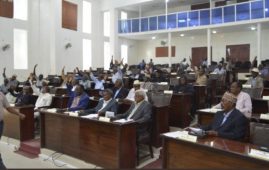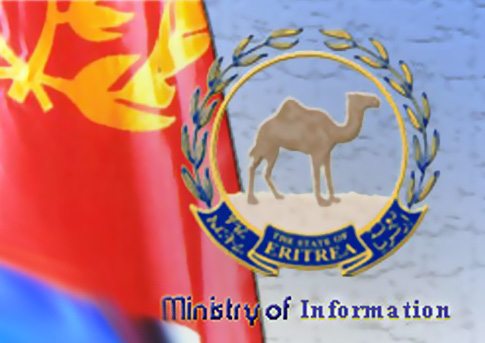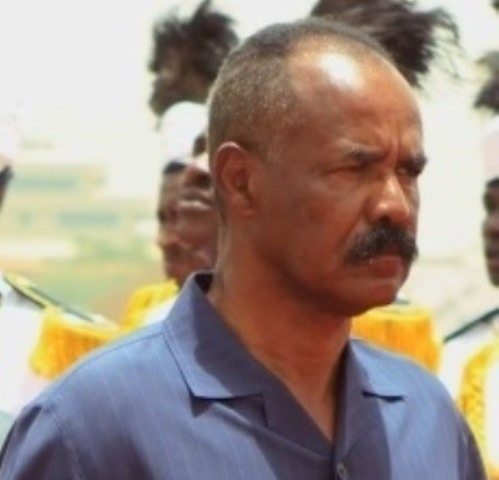In the western fringe of Ethiopia on the banks of the Blue Nile river, the nation’s Prime Minister Meles Zenawi thundered that the country would overcome all obstacles to complete Africa’s largest hydropower plant.
"No matter how poor we are, in the Ethiopian traditions of resolve, the Ethiopian people will pay any sacrifice," he said. "I have no doubt they will, with one voice, say: ‘Build the Dam!’"
The government portrays the dam as a 5,900-foot long, 475-foot high beacon of progress that will banish the country’s reputation for famine and dependency. The $4.8 billion Grand Ethiopian Renaissance Dam will lift the country out of poverty, the government argues, by electrifying the country’s industrialization and making Ethiopia a regional power-hub – and all without a drop of the aid Ethiopia is synonymous in the West for.
Ethiopian Renaissance Dam will lift the country out of poverty, the government argues, by electrifying the country’s industrialization and making Ethiopia a regional power-hub – and all without a drop of the aid Ethiopia is synonymous in the West for.
But critics worry that the country may have taken self-sufficiency and ambition a bit too far in the way it pushed ahead with its largest-ever project unilaterally and with little transparent planning.
Secrecy has shrouded the 5,250-megawatt plant, nearly 20 miles from the Sudanese border. Although the site was identified in 1964, the decision to go ahead with what had been known as Project X became public less than a month before construction began on April 2.
Its unveiling shocked a host of interested parties.
At a launch in Addis Ababa, the Egyptian embassy’s spokesman was astonished to learn a reservoir more than twice the size of Singapore would be created by a barrage Cairo had not been consulted on. Over four-fifths of the water for the Nile, Egypt’s lifeblood, comes from Ethiopia’s highlands, leading to historic tensions over usage.
Also uninformed was the Eastern Africa Power Pool, which was just putting the finishing touches on a regional integration study that leans heavily on exported Ethiopian hydropower. "We look forward to getting more information so we can factor it into our master plan,” Jasper Oduor, its Executive Secretary, said.
Similarly, the unilateral move was a blow to the Nile Basin Initiative, which is supposed to establish cooperative management of the river, and Norwegian consultants whose ongoing studies on a potential cascade of Blue Nile dams were rendered obsolete by the announcement.
The covert approach may have had the twin purposes of minimizing foreign opposition to the scheme while maximizing the impact of its announcement on Ethiopians – if so, it seems to be working.
Since Meles’ speech, the public has been bombarded with advertisements, posters, reports, and speeches about the dam, as the state sells bonds to partially fund it. Most of a patriotic citizenry, who consider Egypt’s domination of the Nile an acute injustice, approve of the scheme – even opposition politicians.
"We need this resource to lift people out of the abject poverty we have been wallowing in for centuries,” former member of parliament Temesgen Zewdie says. “There’s no question it’s an idea the Ethiopian people support.”
The popular cause combined with the ruling party’s extensive influence – around 1 in every 17 Ethiopians is a member – has made for a highly-effective fundraising campaign. Often following a collective decision at staff meetings, public and private sector workers have bought bonds, taking the total raised to 7 billion Ethiopian birr ($408 million) in September, according to Bereket Simon, a longstanding ally of Meles and co-head of a GERD Public Mobilization Council.
Some, such as former president and leading opponent of the government Negasso Gidada, say the hype and pressure of the campaign makes it very difficult for people to opt out. However, the attitude of a lady selling a handful of vegetables on the streets of one of Addis Ababa’s most dilapidated districts is typical: "I would give more money if could afford to." So far, she has donated 30 birr (equivalent to $1.73).
The populist approach may alarm Western liberals, but unity in pursuit of national goals is key to Meles’ "developmental state."
The bond-buying will also foster a savings culture, Bereket hopes. At less than 10 percent of gross domestic product, national savings are under half the rate that funded the investment of much-admired Asian tigers.
So far, no friction with the two downstream nations, Sudan and Egypt, has resulted. A joint committee between the three countries has been set up to study the dam, which Ethiopia insists will benefit all by generating electricity for the region and reducing evaporation due to its deep, elevated reservoir. Indeed, such are the mutual gains, Sudan and Egypt should rightfully cover half the costs of the project, Meles believes. Despite the cordiality, given the political instability in Khartoum and Cairo, relations could rapidly deteriorate.
The Grand Ethiopian Renaissance Dam also has its detractors and dangers.
The Economist claims a flaw is that export deals have not been struck. However, links with Djibouti, Sudan, and Kenya are complete or underway, and the dam’s scheduled 2017 completion date gives the power pool time to advance regional integration.
Also of concern is whether the government will conduct thorough technical studies and environment and social impact assessments. Institutions like the World Bank require them. But government supporters consider these types of activities unacceptable conditions imposed by a hypocritical, carbon-emitting West – not responsible due diligence. Unconditional Chinese funds are much-preferred.
Although the desire to be unshackled is admirable, the impatience could be costly. At the GERD site buzzing with construction activity in late June – 3 months into the project – an Italian engineer explained his team were surveying the rock edifices the dam will bind to. Yes, it was possible they would be found unsuitable, he casually admitted.
For International Rivers, which works "to stop destructive dams," the project is following worst international practice. "No-bid contract, an air of secrecy, and repression of debate. Such a flawed planning process could doom the project from the start," says its Africa campaigner Lori Pottinger.
There’s also concern about how the country will pay for the dam given it will cost around 70 percent of this year’s government budget. Optimists such as Ernst and Young’s Zemedeneh Negatu say continued double-digit economic growth will make it affordable. Private banks, which have been forced to lend to the government for development projects, will be an important source of funds.
But the former World Bank country director Ken Ohashi says a need for foreign loans to finance Ethiopia’s ambitious infrastructure projects could lead to debt problems. To the guffaws of a parliament containing one opposition member, Meles dismissed the concerns as the parting shot of a disgruntled neo-liberal.
******************
This article first appeared on Christian Science Monitor on Jan. 12, 2012, titled ‘Ethiopia’s ‘grand dam’ rouses citizens, dismays critics’, authored by William Davison.
Related:
-
Ethiopia’s dam on Nile launched[Updated] (inc. PM Meles Zenawi speech)
************
Check the Grand Ethiopian Renaissance dam archive for previous and forthcoming posts.






I am really very excited to hear about NILE dam.all Ethiopian peopels should contribute for this.
A lot of peoples including Lori Pottinger from “International Rivers Africa campaigner”
are missing the core scientific point. Their argument tends often to be shallow and unfounded interleaved with some factual realities on the ground by frequently bringing up examples from Australian or Asian continent to justify their argument on the African case. Take for example the following from Lori’s article on Nov. 30, 2011:
“A new 3-D Google Earth video illustrates three key reasons that large dams are the wrong response to climate change:
>River flows are increasingly unpredictable. Large dams have always been based on the assumption that future stream-flow patterns will mirror those of the past, but this is no longer true. Climate change has begun to significantly and unpredictably change precipitation patterns. More frequent droughts will make many hydropower projects uneconomic. More extreme rainfall will increase the risk of dam failures and catastrophic flood releases.
Healthy rivers are critical for supporting life on Earth. Big dams make it harder for people and ecosystems downstream of dams to adapt to climate change by reducing water quality and quantity, drying up forests and wetlands, flooding productive land, and destroying fisheries.
Dam reservoirs emit greenhouse gases. In the tropics, dam reservoirs are a globally significant source of one of the most potent gases, methane. Meanwhile, free-flowing rivers play a crucial role in helping trap carbon.”
If someone looks at the above three argumentative paragraphs, they are basically bogus in their reasoning to say the least. Look the first paragraph “River flows are increasingly unpredictable”. To be fair, there was no time in the history of human kind where river flow was ever predictable with certainty. And we like it or not there is a strong and inherent relationship between the past rain-pattern and future eventual trend (this is basically the key assumption for any scientific investigation, and the backbone of inferential and analytical statistics). There are two potential driving causes for climate change, a) human induced, or b) nature driven. in case of a) i believe the industrialized nations better do some house check and reduce their emission over a reasonable period of time. In case of b) there is nothing much what we could possibly do; but the process is geological and takes hundreds of years for the change to take a measurable effect. On the other hand the life span of a dam is at most less than 100 years and the economic turn around happens in the first 20 or 25 years.
in regards to the second paragraph, I would advice Lori to check river systems across developed nations for example Tennessee River-The regulation of this river contributed substantially to reduce pollution, and constant amount of water over the whole year. This type of flow is more helpful AND NOT THE OTHER WAY AROUND.
Regarding the greenhouse gases, in case of methane if the volume is really much, there must be a way to harness and use it. The case of CO2 is really puzzling since water is a sink and not source of CO2. If for some reason there happens to be a process reversal, then appropriate REFORESTATOIN ON THE UPSTREAM RANGELAND REGIONS should balance this.
Basically the core negative argument on the Ethiopian Dams is substantially unscientific and unfounded.
And finally, the thinking that you could do critical decisions based on Google earth video as the sole source of information, shows how shallow some peoples sound in their argument.
Well, an Ethiopian geologist working on the site pretty much said (on an ETV documentary a few months back) that their geological surveys indicated that the dam site is suitable….
But the point remains that the govt (rightfully or not) possibly went into it with pre-feasibility level studies in order to maintain the secrecy…
And so the Italian engineer might have been commenting on the probability that the site could be unsuitable, because they were still finalizing the detailed tests ! (assuming they were still doing the surveys then).
Now, that probability could very well be a slim chance, given previous encouraging reconnaisance studies; we will never know — because it wouldn’t have served the story line the CSM reporter was going with…
Something I am interested in and feel discomfort is the comment from (SALINI) Italian Engineer, it should be clear.